Are we in a new era of age-statement Scotch?
Following a flurry of no-age-statement releases a decade ago, the past 12 months have produced multiple age-statement bottlings – and significant ones at that. We investigate what’s driving this new phase of aged liquid.
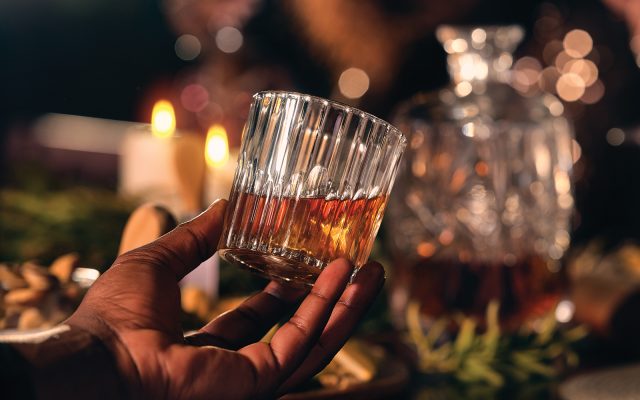
*This feature was originally published in the August 2024 issue of The Spirits Business magazine.
Are we in a new era of age-statement Scotch whisky? To begin with, let’s go back eight to 10 years ago when no-age-statement (NAS) whiskies divided opinions among whisky fans – not always positively. Many brands peddled the ‘flavour-forward’ message as a good thing in regard to the development of NAS bottlings. Removing age statements, they argued, afforded blenders greater flavour potential. However, more cynical drinkers loudly lamented the lack of double digits adorning their favourite bottles.
Avid fans will likely recall the uproar that surrounded the discontinuation of The Glenlivet 12 in 2015, which was replaced by a permanent NAS whisky, Founder’s Reserve, to alleviate pressure on the distillery’s dwindling aged stock. It was several years before the 12-year-old made a reappearance, with a limited number of bottles reintroduced in the UK in summer 2018, ahead of other markets. It’s just one example of the long-running age versus no-age predicament.
“As an industry, we are notoriously bad for managing our stocks,” says Vic Cameron, whisky lecturer at the Edinburgh Whisky Academy, who previously worked at Johnnie Walker owner Diageo for 23 years. “In my opinion, as an industry we moved into NAS because we didn’t have enough 10-year-old, 12-year-old, or 15-year-old whisky to supply those sorts of brands. I don’t think it was quality driven or specifically on purpose that we moved to NAS. It was a ‘needs must when the devil farts in your face’ kind of thing.”
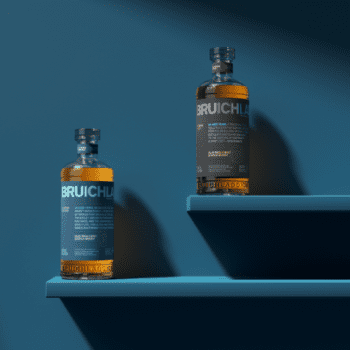
But change has been afoot in the past six to 12 months. A plethora of aged whiskies – starting from the high teens and climbing up to 50-plus years – have joined portfolios, not just as limited releases, but as permanent additions. Let’s recap a few notable new products. In February, Speyside distiller Longmorn committed to only bottling whiskies aged for 18 years or more as it introduced two new single malts: Longmorn 18 Years Old, and Longmorn 22 Years Old. That same month, Islay’s Bruichladdich launched its first high-age-statement whiskies as the first bottlings in its Luxury Redefined range: an 18-year-old Bruichladdich and a 30-year-old, the latter priced at £1,500 (US$1,935). Then, in April, William Grant & Sons debuted blended Scotch brand Wildmoor, a seven-strong set of whiskies aged between 21 and 40 years, before The Glen Grant unveiled The Glasshouse Collection in June, comprising 21-, 25-, and 30-year-old whiskies. (As you can see, 2024 has welcomed age statements galore).
For Cameron, this recent development is an indication that stock management has improved across the board. “There is a reservoir of aged stock now so The Glenlivets of this world can move back to the 12, Glenmorangie can move from 10 to 12 years – there’s that move back to aged stock, and a little older,” he says. “You see Pernod Ricard releasing an 18- and a 22-year-old Longmorn, which is quite unusual when they didn’t even have a 10 or 12 on the shelves already. I think a lot of people have stock management back in line – it’s so difficult to do.”
Experts and epicureans
I take my hypothesis to Longmorn directly, intrigued by the brand’s bold decision to only bottle whisky aged for 18 years or more. What prompted such a move? “The newly released 18-year-old and 22-year-old single malts will be the foundation of Longmorn’s whisky portfolio,” says Kevin Balmforth, cask expert at owner Chivas Brothers. “Longmorn’s higher-aged releases appeal to the collector. The collectors are experts and epicureans, established professionals who are interested in learning more about rare spirits and love to be seen as ‘in the know’.
“They have high standards and expectations, and want to keep exploring their passions – arguably cementing that we are in a new era of whisky appreciation where age statements are more understood and appreciated than ever, while reinforcing the fact that age is not the only marker of quality.”
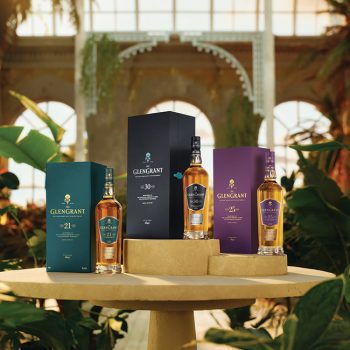
While older Scotch whiskies do spell good news for consumers, they present their own challenges, too. Cameron considers whether stock inventories have, perhaps, tipped too far into a surplus, which could present problems for producers. He is also a consultant, and says: “I’ve got clients that have full warehouses and are not able to sell. As your stock gets older, there’s always the drive or potential for you to increase the price. But if you’ve got excess stock, you may have to use some 13-, 14-, 15-year-old in your 10-year-old or 12-year-old releases, and that’s not realising the full value of your stock. It’s a balancing act in how far you can go to realise the potential of your stock.”
There is also the risk that the category’s work to democratise Scotch – by dispelling past narratives about who a Scotch whisky drinker is, and rules about how it should be enjoyed – could come undone. It is widely agreed that age is no indication of quality. However, age does, understandably, command a higher price tag. With a strong focus on older, aged whiskies, Scotch brands must be careful not to confuse consumers away from their core message that Scotch is a spirit for everyone. “The beauty of a portfolio like the one you’ll find from The Glen Grant is that there is a whisky for everyone,” says Raul Gonzalez, global managing director for spirits at Campari Group. “We offer a permanent collection of six exceptional age-statement whiskies that range from a 10-year-old to a 30-year-old. We are committed to maintaining a strong core range, and, at the same time, expanding our luxury offerings, which helps to ensure that we have an offering for the collector’s and luxury market, while also providing high-quality options that are accessible to a wider range of whisky enthusiasts.”
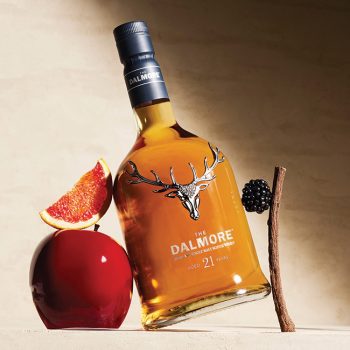
Cameron also notes that several brands are chasing what he dubs “The Macallan model” of super-premium Scotch. The Dalmore is another brand that also sits in those higher echelons of the whisky world. For Kieran Healey-Ryder, Whyte & Mackay’s global head of communication, The Macallan, along with Whyte & Mackay’s The Dalmore, has been important to the “renaissance of Scotch whisky, driven by single malts”. The Dalmore has released some top-end age statements, including a 50-year-old, “which is still one of the most talked-about releases we’ve ever done”, Healey-Ryder says. “The number of distilleries that have aged stocks is really low, actually, and sometimes when you’re in the industry, you could be forgiven for thinking that everyone can release a 40- or a 50-year-old. The notion of age is timeless. What we know is that consumers at any price point, for any occasion, spend a relatively short amount of time thinking about the story. So, although I’m fortunate to spend my life telling stories about The Dalmore in particular, the consumer’s not really thinking that long about who we are, what we are, and what makes us special. The age is a short cut. It’s a way of telling something about us that immediately cuts through any moments of doubt.”
‘Age is really important’
He also gives another reason for the recent influx of aged whiskies: Covid-19. “Those whiskies may well have been due to be released during the pandemic, and were held back, which has created this wave of releases,” Healey-Ryder continues.
“We all know on this call there are more releases than ever before – and the majority of them are age statements. When I look at Glenmorangie’s decision to move from 10 to 12 years, that, to me, reinforces the perception that for one of the UK’s leading malts, the age is really important.”
This last point about age being important for Scotch is also shared by Sam Simmons, head of whisky at Atom Brands. For the core range of That Boutique-y Whisky Company bottlings, age statements play a starring role. With the rising interest and growth coming from newer whisky-producing regions, Simmons believes age is currently Scotch whisky’s ace card. “I can see why distillers would want to introduce products with higher age statements,” he explains. “It’s because it’s their current advantage in Scotch. I wonder if that’s part of why new products are being introduced at greater age statements? That also hopefully has a halo effect down to younger expressions too, but it does differentiate them from all the upstarts in America, Australia, or [the rest of] the UK.”
Cameron shares a similar sentiment. “The Scotch industry is trying to stay ahead of the rest of the world. There are some quality products coming out of other countries, and we must get our message across. We cannot live off history and tradition, which we’re great at; we need to have a premium product that is quality, and we are doing that. And we have to manage our stocks well. But if you look at the world today, you don’t know what’s going to happen. Another Covid? Another Ukraine war? I don’t know how people can predict two days ahead, let alone how you can plan for 10 or 12 years.”
The years will tell whether producers can, and will, produce age-statement whiskies at pace. But, answering the original question: are we in a new era of age-statement Scotch whisky? I’d say yes, we are.
All eyes on Islay
By Millie Milliken
Reopened ghosts, first releases and new distilleries on the horizon – Islay’s whisky landscape is growing.
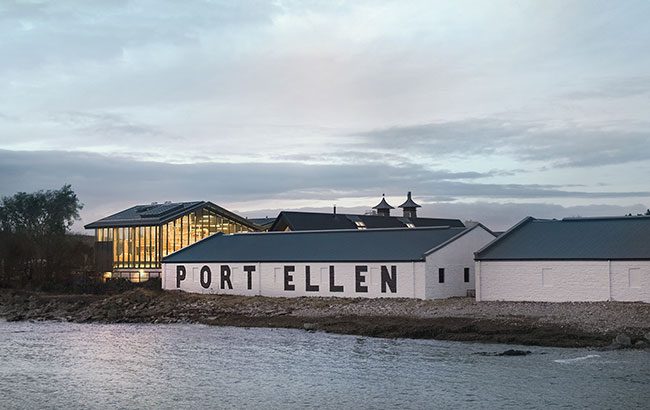
Perhaps the most noise was made around the reopening of Port Ellen, 40 years after the south coast distillery closed. Originally opened in 1825, the blend-friendly peated Scotch became seemingly obsolete in 1983 – 14 years later, Diageo announced plans to bring the ghost back to life. Part of the drinks behemoth’s £185 million (US$236.2m) investment in the Scotch category, the now proud again Port Ellen has a roll call of shiny new toys to boast about: its two Phoenix stills are exact replicas the distillery’s original 1983 still, and will run along two experimental stills; a 10-part spirit safe that will allow master distiller Alexander McDonald and his team to pull multiple cuts and explore a multitude of flavours; a six-part roller mill; and an on-site laboratory for the exploration of smoke. The distillery is also carbon neutral cementing its place firmly in the future of Islay.
Another addition to the island is Ardnahoe, Islay’s ninth distillery (and its first new addition since 2009), which this year launched its first whisky, Inaugural Release. Officially opened in 2018, the distillery which sits over three acres on the northeast coast, is the work of the family behind Hunter Laing & Co – Stewart Laing and sons Andrew and Scott. As a young distillery playing among some of the category’s biggest players, the Laings knew Ardnahoe would have to come out swinging. As such, it already has a number of records under its belt: it’s the only distillery on the island using worm tubs; its 7.5m lyne arms are the longest in Scotland; and Loch Ardnahoe, its water source, is said to be the deepest on Islay.
And there’s more to come: Elixir Distillers’ Portintruan Distillery, just outside the town of Port Ellen, has been under construction since 2020 on the historic farm estate of the same name. Combining old-style whisky-making techniques and modern tech, the distillery will also have an experimental facility with plans afoot to produce rum as well as whisky. Ian Macleod Distillers and the Islay Boys are set to open the Laggan Bay Distillery in 2025; while Gearach Farm had the go ahead for Iii Distillery in 2022 and, when completed, will be Islay’s 13th distillery.
What are the benefits of no-age-statement whiskies?
Jillian Boyd – master blender, Halewood Artisanal Spirits
“Whisky is a natural product and sometimes it may take slightly more or less time for the spirit to mature and become ready to drink.
“The type of cask we choose to mature our spirit in also means that some whiskies reach their optimum taste at different times – American virgin oak, ex-Bourbon, ex-Sherry, ex-red wine casks will all give different results across different time scales.
“By choosing no age statements we can allow flexibility, which means we use spirit when it has reached the right time to drink, whether that is older or younger than expected.”
Are there pros and cons to bottling age statements?
Laure Habbouse – global marketing, La Martiniquaise-Bardinet
“From a logistical point of view, age statements limit a distillery to what they have available, and mean that experimentation can take a long time to be showcased in bottle but they always offer a different style and complexity to their younger siblings. At Glen Moray we started exploring different casks a very long time ago; it allows us to offer wonderful various aged variants today.
“Since 1897, Glen Moray has been distilling the finest single malts in Speyside and exploring how different woods can influence its whisky’s taste. Records show that the distillery’s founders aged their spirit in an astonishing array of casks. Their experimental ways still inspire Glen Moray’s craftsmen to this day. Matured for many years in select casks, the five whiskies of the Heritage range showcase Glen Moray’s passion for flavour and generations of skill.”
Why are age statements important to Loch Lomond?
Michael Henry – master blender, Loch Lomond Group
“Age is a reflection of the legacy of our whisky-making heritage, and allows us to showcase the generations of custodians who came before us. Age alone does not create an exceptional whisky. It is a combination of expertise in innovative distillation and cask quality which contribute to our unique flavour profiles. Building on decades of traditional craftsmanship and pioneering techniques, we have curated an extraordinary collection of distinctive whiskies. Our broad portfolio includes an array of both non-age statements and age statements.”
In Scotch whisky, is age really just a number?
Ros Nuttall-Jones – marketing manager, Tullibardine
“The idea of ‘the older the whisky the better’ is outdated. You can find amazing releases from new distilleries, and core-range NAS whiskies that are up there with older, aged whiskies. It’s about the liquid. There’s always a sweet spot in terms of age – there can be such a thing as too old, where the wood completely overpowers the spirit.”
Related news
Argentina recognises Scotch with ‘first ever’ GI
